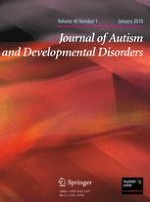01-01-2010 | Original Paper
Increased White Matter Gyral Depth in Dyslexia: Implications for Corticocortical Connectivity
Gepubliceerd in: Journal of Autism and Developmental Disorders | Uitgave 1/2010
Log in om toegang te krijgenAbstract
Recent studies provide credence to the minicolumnar origin of several developmental conditions, including dyslexia. Characteristics of minicolumnopathies include abnormalities in how the cortex expands and folds. This study examines the depth of the gyral white matter measured in an MRI series of 15 dyslexic adult men and eleven age-matched comparison subjects. Measurements were based upon the 3D Euclidean distance map inside the segmented cerebral white matter surface. Mean gyral white matter depth was 3.05 mm (SD ± 0.30 mm) in dyslexic subjects and 1.63 mm (SD ± 0.15 mm) in the controls. The results add credence to the growing literature suggesting that the attained reading circuit in dyslexia is abnormal because it is inefficient. Otherwise the anatomical substratum (i.e., corticocortical connectivity) underlying this inefficient circuit is normal. A deficit in very short-range connectivity (e.g., angular gyrus, striate cortex), consistent with results of a larger gyral window, could help explain reading difficulties in patients with dyslexia. The structural findings hereby reported are diametrically opposed to those reported for autism.
